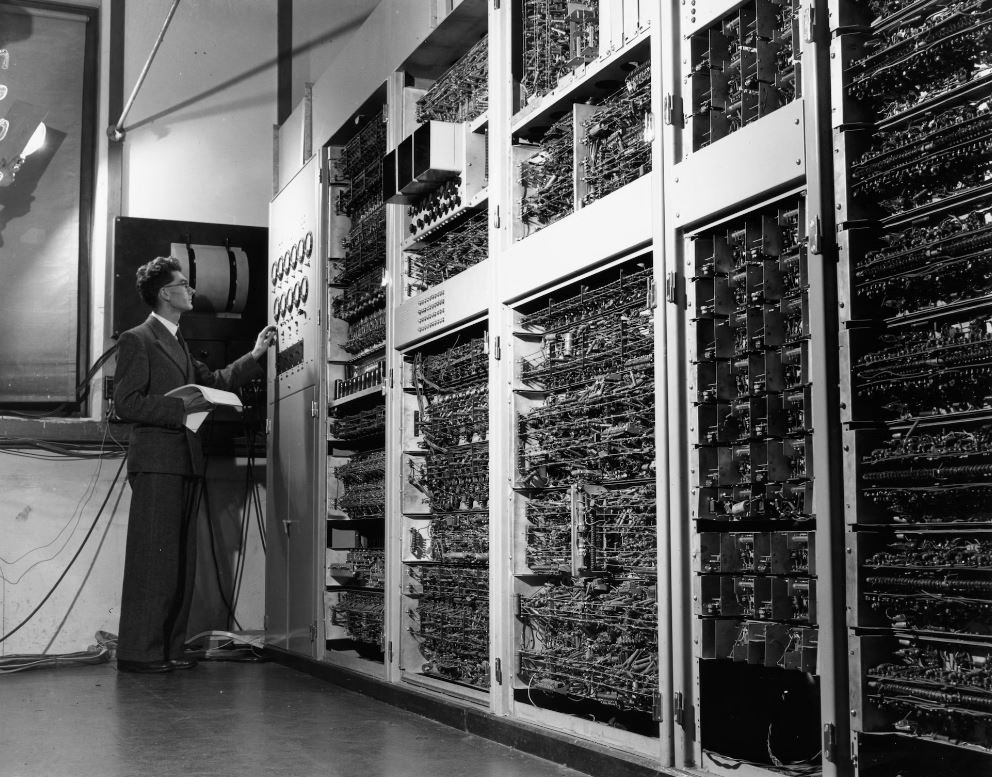Tesla Model S vs Hellcat
The Tesla Model S and Hellcat are two iconic vehicles that cater to different segments of the automobile market. The Model S, manufactured by Tesla, is an all-electric luxury sedan well-known for its impressive acceleration and sustainable design. On the other hand, the Hellcat, produced by Dodge, is a high-performance muscle car celebrated for its raw power and aggressive attitude. Let’s delve into the details and compare these two captivating automobiles.
Key Takeaways
- The Tesla Model S is an all-electric luxury sedan with remarkable acceleration.
- The Hellcat is a high-performance muscle car known for its raw power.
- The Model S is environmentally friendly, while the Hellcat is gas-powered.
- Both vehicles offer cutting-edge technology and luxurious features.
In terms of speed and acceleration, the **Tesla Model S** is truly a force to be reckoned with. Equipped with **electric motors** and **instant torque**, the Model S can go from 0 to 60 mph in just a few seconds. It’s worth noting that the top-of-the-line **Model S Plaid** can achieve this feat in under 2 seconds, making it one of the quickest production cars in the world.
On the other end of the spectrum, the **Hellcat** lives up to its name, boasting a **supercharged V8 engine** that produces an astonishing amount of horsepower. It can go from 0 to 60 mph in about 3.6 seconds, which is incredibly impressive for a classic muscle car.
*The combination of the Tesla Model S‘s electric power and instant torque provides an unparalleled driving experience.
Comparing Specifications
| Model | Tesla Model S | Hellcat |
|---|---|---|
| Acceleration (0-60 mph) | Less than 2 seconds (Plaid) | 3.6 seconds |
| Powertrain | All-electric | Gasoline |
| Top Speed | 200+ mph (Plaid) | 199 mph |
In addition to their impressive performance, both vehicles come equipped with advanced technology and luxurious features. The **Model S** features a minimalist interior with a large central display, which controls various aspects of the vehicle, including navigation, entertainment, and vehicle settings. Tesla’s Autopilot, an advanced driver-assistance system, is also available on the Model S, offering enhanced safety and convenience on the road.
Meanwhile, the **Hellcat** offers a more traditional muscle car interior, yet still with modern amenities. From high-quality materials to advanced infotainment systems, the Hellcat offers a comfortable and enjoyable driving experience. The Hellcat also features a range of performance-oriented features, such as launch control and line lock, which allow drivers to maximize their driving pleasure on the track or the street.
*The marriage of cutting-edge technology and luxurious features makes both the Tesla Model S and Hellcat standout choices in their respective markets.
Comparing Features
| Feature | Tesla Model S | Hellcat |
|---|---|---|
| Infotainment System | Large central display with intuitive controls | Advanced infotainment system |
| Driver-Assistance | Autopilot | Launch control and line lock |
| Interior | Minimalist design | Traditional muscle car feel |
In conclusion, both the **Tesla Model S** and **Hellcat** have their unique selling points and cater to different customer preferences. The Model S excels in providing an exhilarating and environmentally friendly driving experience, while the Hellcat satisfies those seeking a powerful and iconic muscle car. Whether you prioritize sustainability, cutting-edge technology, or raw horsepower, both these vehicles offer remarkable features and capabilities that cannot be overlooked.

Common Misconceptions
1. Electric cars are slow and have limited range
One common misconception about the Tesla Model S is that it is slow and has a limited range compared to the Hellcat. However, this is not true. The Tesla Model S can go from 0 to 60 mph in just 2.4 seconds, making it one of the fastest cars on the market. Additionally, the Model S has a range of up to 390 miles, depending on the model and battery configuration. This is more than sufficient for most daily commutes and long-distance trips.
- The Tesla Model S can accelerate faster than most sports cars.
- The Model S has a range that is comparable to many gasoline-powered cars.
- Advancements in battery technology are constantly improving the range of electric cars.
2. Electric cars are expensive to maintain
Another misconception about the Tesla Model S, compared to the Hellcat, is that it is expensive to maintain. However, the truth is quite the opposite. Electric cars generally have fewer moving parts than gasoline-powered cars, which means there are fewer components that can wear out or break. This, in turn, leads to lower maintenance costs. Tesla also offers a comprehensive warranty and service program that covers many maintenance and repair needs, further reducing the overall cost of ownership.
- Electric cars have fewer moving parts, reducing the risk of mechanical failures.
- The Tesla Model S offers a comprehensive warranty and service package.
- Electric cars may require less frequent maintenance compared to gasoline-powered cars.
3. Electric cars are not practical for long trips
Some people believe that electric cars, including the Tesla Model S, are not practical for long trips. However, this is a misconception that fails to consider the growing network of charging stations and the increasing speed of charging technology. With the Supercharger network, Tesla owners can easily find and utilize high-speed chargers to quickly recharge their cars along long-distance routes. Additionally, Tesla is continually expanding its Supercharger infrastructure, making long trips in the Model S more convenient and feasible than ever before.
- Tesla owners have access to a widespread network of Supercharger stations.
- The Supercharger network allows for quick recharging during long trips.
- Tesla is constantly expanding its Supercharger infrastructure to cover more areas.
4. Electric cars have limited performance capabilities
There is a misconception that electric cars, such as the Tesla Model S, lack the performance capabilities of gasoline-powered cars like the Hellcat. However, this is far from the truth. Electric motors provide instant torque, resulting in rapid acceleration and impressive performance. The Tesla Model S, with its powerful electric motor, can easily outpace many high-performance gasoline cars in terms of acceleration. Moreover, electric cars offer a smooth and quiet driving experience, which can be particularly enjoyable for enthusiasts seeking a different driving sensation.
- Electric motors provide instant torque for quick acceleration.
- The Tesla Model S can outperform many gasoline-powered cars in terms of acceleration.
- Electric cars offer a unique driving experience with smooth and quiet operation.
5. Electric cars are not environmentally friendly
Contrary to popular belief, electric cars like the Tesla Model S are indeed much more environmentally friendly compared to gasoline-powered cars like the Hellcat. While electric cars produce zero tailpipe emissions, gasoline cars emit harmful greenhouse gases and contribute to air pollution. Additionally, as the grid becomes increasingly powered by renewable energy sources, the overall carbon footprint of electric cars continues to decrease. Furthermore, Tesla has made sustainability a key focus in its production and design processes, utilizing renewable energy and reducing waste.
- Electric cars produce zero tailpipe emissions, contributing to cleaner air quality.
- As the grid becomes greener, electric cars become even more environmentally friendly.
- Tesla prioritizes sustainability in its production and design processes.

Introduction
In this article, we compare the Tesla Model S and the Hellcat, two fierce contenders in the world of high-performance cars. Through a series of data-rich tables, we will delve into various aspects such as power, speed, and cost, providing you with comprehensive insights into these impressive vehicles.
Battery Range Comparison
One crucial factor when considering an electric vehicle is its range. Let’s explore how the Tesla Model S stacks up against the Hellcat in terms of battery range.
| Tesla Model S | Hellcat |
|---|---|
| 370 miles | Not applicable (gasoline engine) |
Acceleration Comparison
Acceleration plays a pivotal role in determining the thrill and excitement offered by a car. Take a look at the acceleration statistics of the Tesla Model S and the Hellcat.
| Tesla Model S | Hellcat |
|---|---|
| 0-60 mph: 2.3 seconds | 0-60 mph: 3.4 seconds |
Top Speed Comparison
For those craving speed, knowing the top speeds these vehicles can reach is crucial. Discover the maximum speeds achieved by the Tesla Model S and the Hellcat.
| Tesla Model S | Hellcat |
|---|---|
| 200 mph | 204 mph |
Power Comparison
Power, measured in horsepower, gives us an idea of the raw strength possessed by these cars. Let’s compare the power outputs of the Tesla Model S and the Hellcat.
| Tesla Model S | Hellcat |
|---|---|
| 762 hp | 717 hp |
Price Comparison
Price is often a deciding factor when choosing between two remarkable cars. Take a look at the cost of the Tesla Model S and the Hellcat.
| Tesla Model S | Hellcat |
|---|---|
| $79,990 | $67,990 |
Environmental Impact Comparison
In addition to performance aspects, considering the environmental impact is important. Let’s examine the CO2 emissions and sustainability features of the Tesla Model S and the Hellcat.
| Tesla Model S | Hellcat |
|---|---|
| Zero CO2 emissions | Higher CO2 emissions |
| Sustainable electric vehicle | Non-electric vehicle |
Safety Comparison
Ensuring the safety of passengers is of paramount importance. Let’s compare the safety features of the Tesla Model S and the Hellcat.
| Tesla Model S | Hellcat |
|---|---|
| Advanced driver-assistance systems | Standard safety features |
| Top safety ratings |
Cargo Space Comparison
When it comes to practicality, cargo space is an important consideration. Explore the cargo capacities of the Tesla Model S and the Hellcat.
| Tesla Model S | Hellcat |
|---|---|
| 28 cu ft | 17 cu ft |
Technology Features Comparison
Modern vehicles often come packed with technology. Let’s compare the noteworthy technology features of the Tesla Model S and the Hellcat.
| Tesla Model S | Hellcat |
|---|---|
| Large touchscreen infotainment system | Standard infotainment system |
| Autopilot capabilities |
Conclusion
After analyzing various aspects of the Tesla Model S and the Hellcat, it is clear that both cars offer remarkable features and performance. The Tesla Model S excels in areas such as battery range, acceleration, environmental impact, and technology features. On the other hand, the Hellcat boasts a higher top speed, lower price, and a traditional gasoline engine. Ultimately, the choice between these two incredible vehicles depends on individual preferences, whether prioritizing sustainability or raw power. Whichever car one chooses, both the Tesla Model S and the Hellcat offer an exhilarating driving experience in their own unique ways.
Frequently Asked Questions
Q: What are the main differences between the Tesla Model S and the Hellcat?
A: The Tesla Model S is an electric sedan that offers zero-emission driving, advanced autopilot capabilities, and a luxurious interior. On the other hand, the Hellcat is a high-performance muscle car that runs on gasoline, delivers immense power, and emits exhaust gases. While the Model S focuses on sustainability and advanced technology, the Hellcat aims for raw power and a traditional driving experience.
Q: Which one is faster: the Tesla Model S or the Hellcat?
A: In terms of acceleration, the Tesla Model S is known for its blistering speed. The top-performing Model S variant, the Plaid+, claims an estimated 0-60 mph (0-97 kph) time of under 1.99 seconds. Meanwhile, the Hellcat, specifically the Dodge Challenger SRT Hellcat Redeye, has a claimed 0-60 mph time of 3.4 seconds. However, it’s important to note that direct performance comparisons may vary depending on specific models and conditions.
Q: What is the range of the Tesla Model S compared to the Hellcat’s fuel efficiency?
A: The Tesla Model S offers impressive electric range. The exact range depends on the model and battery pack size. For instance, the Model S Long Range claims a range of up to 390 miles (approximately 628 kilometers) on a full charge. In contrast, the Hellcat’s fuel efficiency is considerably lower, with an average EPA fuel economy of around 15 miles per gallon (approximately 6.4 kilometers per liter).
Q: Are there any differences in the handling and driving experience between the Model S and the Hellcat?
A: Yes, there are notable differences in the handling and driving experience. The Tesla Model S, being an electric vehicle, provides instant torque delivery, resulting in quick and smooth acceleration. It also features a low center of gravity due to the battery pack, enhancing its stability and cornering abilities. In contrast, the Hellcat, with its powerful V8 engine, delivers a more traditional muscle car experience with rear-wheel drive, aggressive exhaust notes, and raw power.
Q: Is the Tesla Model S more environmentally friendly than the Hellcat?
A: Yes, the Tesla Model S is considered more environmentally friendly compared to the Hellcat. Being an electric vehicle, it produces zero tailpipe emissions during operation, helping reduce air pollution and dependence on fossil fuels. The Hellcat, like any gasoline-powered muscle car, releases greenhouse gases and contributes to air pollution through its exhaust emissions.
Q: Can the Tesla Model S be charged at home like a regular vehicle?
A: Yes, the Tesla Model S can be charged at home using a dedicated charging station or a regular electrical outlet. Tesla provides special charging equipment called Wall Connectors that allow for faster charging speeds. Alternatively, you can use a standard 120-volt electrical outlet, although it will take longer to charge the vehicle compared to a higher-voltage charger.
Q: Does the Hellcat require any special maintenance compared to the Model S?
A: Yes, the Hellcat may require additional maintenance compared to the Model S. With its high-performance components and powerful engine, the Hellcat may need more frequent oil changes, specialized maintenance for its performance-related systems, and specific considerations for its tires and brakes. The Tesla Model S, being electric, requires minimal maintenance on its drivetrain (no oil changes) and has regenerative braking that puts less stress on the brake components.
Q: Which one is more expensive to purchase: the Tesla Model S or the Hellcat?
A: The purchase price of the Tesla Model S and the Hellcat can vary depending on the specific model, trim level, and additional options. Generally, the Tesla Model S is known to have a higher base price compared to the Hellcat. Furthermore, the Model S might be eligible for government incentives and tax credits in some regions, potentially offsetting the initial cost.
Q: Are there any safety differences between the Model S and the Hellcat?
A: Yes, there are safety differences between the two vehicles. The Tesla Model S is equipped with advanced safety features such as Autopilot, collision avoidance systems, and over-the-air updates that can enhance safety performance. It also has a high safety rating and excellent crash test results. The Hellcat, while featuring basic safety systems, does not offer the same level of advanced driver-assistance technologies and may have different safety ratings depending on the model and year.
Q: Can the Tesla Model S outperform the Hellcat in a track setting?
A: In terms of track performance, the Model S can offer impressive acceleration and handling capabilities. Its instant electric torque and low center of gravity contribute to good track performance. However, the Hellcat, with its high horsepower and aggressive driving dynamics, is specifically designed for track performance and can excel in straight-line acceleration and top speed. Ultimately, the outcome may depend on various factors such as the skill of the driver, the specific track layout, and individual vehicle modifications.




